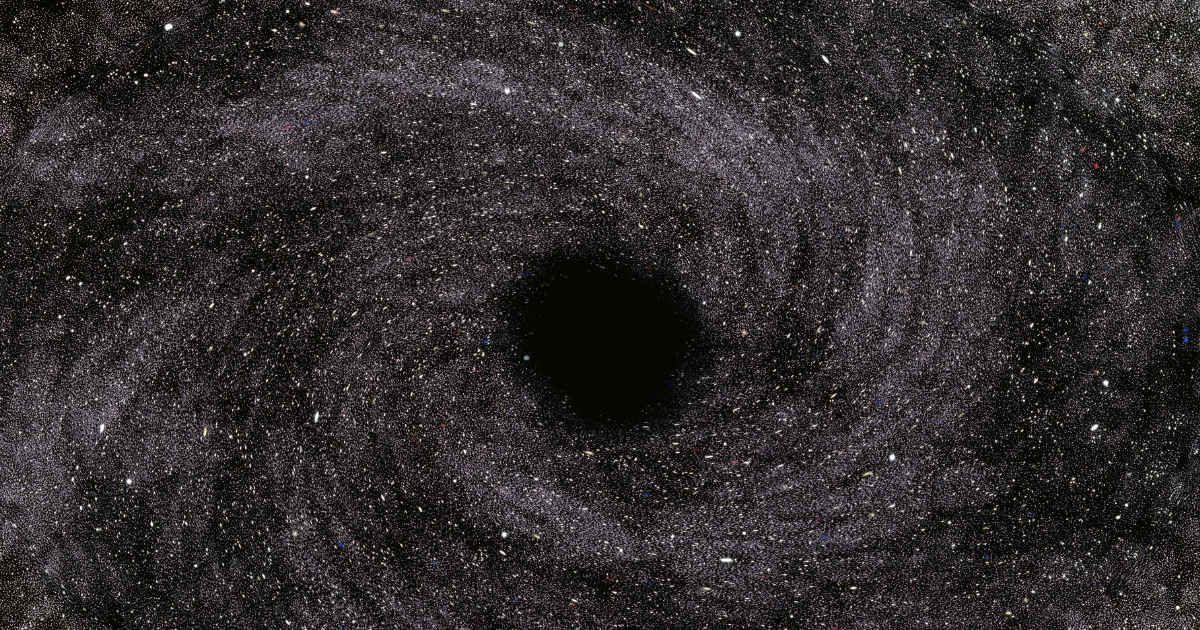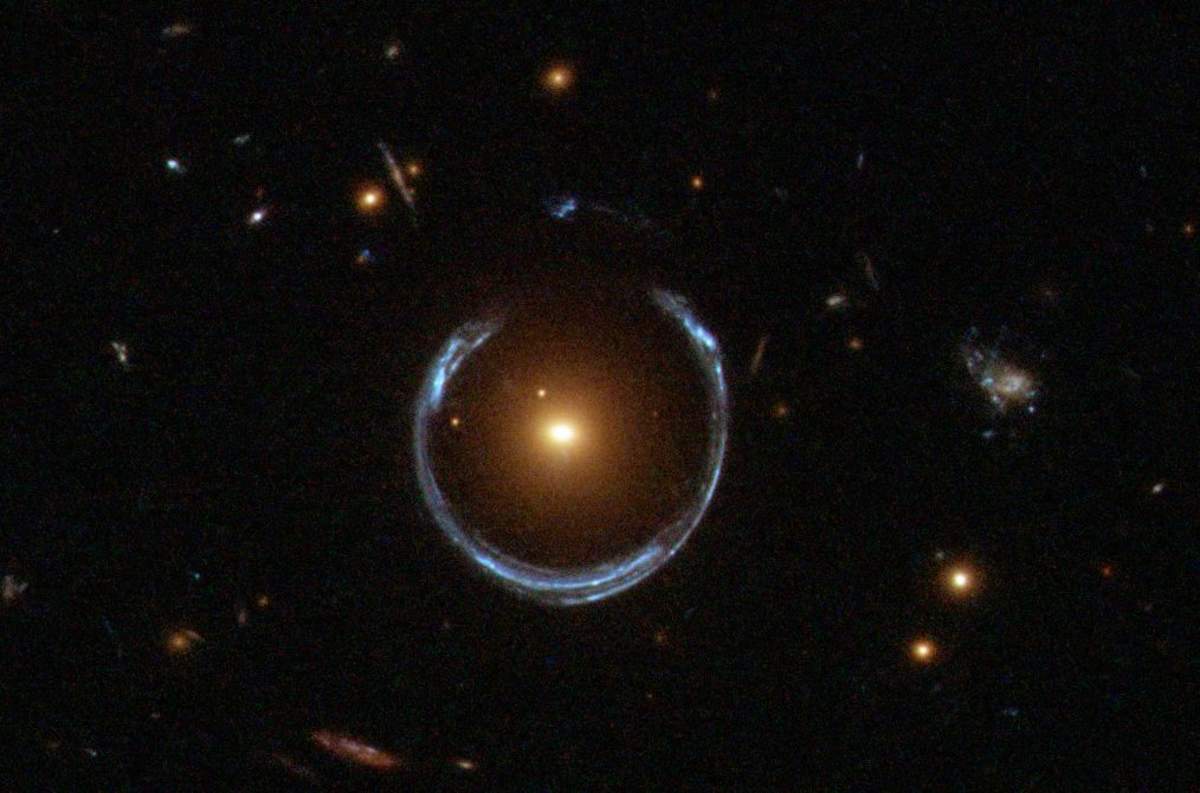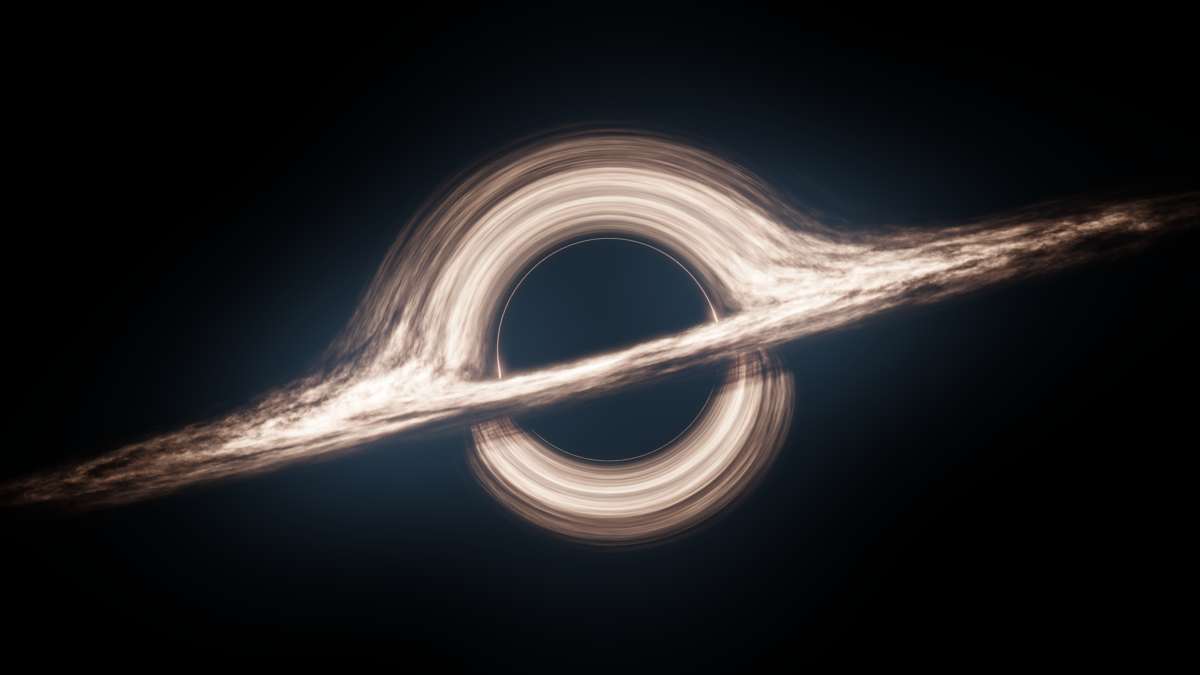Researchers Stunned After Discovering Black Hole Measuring 36 Billion Suns Located 5 Billion Light-Years Away

Researchers have measured a black hole in the Cosmic Horseshoe present in the Leo constellation. If the measurement is correct, then it is the most massive black hole known to date in the universe. Insights regarding this black hole have been published in the journal Monthly Notices of the Royal Astronomical Society. For their investigation, researchers used a method typically applied to black holes near the observer. The results indicated that the black hole in question is 36 billion times the mass of the Sun. Even with the determined uncertainty of six billion solar masses, it is still one of the biggest black holes ever discovered.

Where is This Black Hole?
The black hole is five billion light-years away from Earth, in the gravitational lensed system, Cosmic Horseshoe, according to Space.com. It is made up of two galaxies. The black hole is present entirely in just one of these galaxies, and is "dormant" in nature, which means that accretion is either slow or not there at all. Accretion is a process by which surrounding matter is drawn by a black hole using gravity. "This is amongst the top 10 most massive black holes ever discovered, and quite possibly the most massive," Thomas Collett, study author and a professor at the University of Portsmouth in England, shared, according to the Royal Astronomical Society.

Method of Measurement
Researchers have measured supermassive black holes in the past, but they have incorporated accretion in their calculations, according to IFLScience. Here, this was not possible. Hence, the team used the method usually applied to local black holes, which have gone dormant. The team took readings of how much the black hole's gravity warped the light passing close to it, and also the pace of stars moving in the region.
They noted that stars exhibited a very high speed of 250 miles per second in the area. These observations helped the team determine the mass of this particular black hole. "Its detection relied purely on its immense gravitational pull and the effect it has on its surroundings," added lead author Carlos Melo of the Universidade Federal do Rio Grande do Sul in Brazil. The success of this operation means other supermassive dormant black holes can be measured in the same manner.

Insights from the Discovery
Researchers have made several observations regarding black holes through this finding. One of them is the relation between the size of black holes and their home galaxy. Two dormant black holes, the one detected by the team of researchers associated with the study in Orange Galaxy and Sagittarius A* in the Milky Way Galaxy, had a massive size difference. The latter just had a mass of 4.15 million suns. The difference is essentially due to the sizes of their respective galaxies, according to the study.
Scientists think that because the Milky Way Galaxy is smaller than the Orange Galaxy, Sagittarius A* is smaller than the discovered black hole. "We think the size of both is intimately linked," Collett said, "because when galaxies grow, they can funnel matter down onto the central black hole. Some of this matter grows the black hole, but lots of it shines away in an incredibly bright source called a quasar. These quasars dump huge amounts of energy into their host galaxies, which stops gas clouds condensing into new stars."
Another insight from the investigation was about the formation of this supermassive black hole. Researchers claim that the Cosmic Horseshoe is a combination of two galaxies, which have become a "fossil group." It means the pair has reached the end stage of their evolutionary process. The supermassive black holes may be formed by the combination of black holes in these galaxies that merge at the end of their "life" cycle. "It is likely that all of the supermassive black holes that were originally in the companion galaxies have also now merged to form the ultramassive black hole that we have detected," explained Collett. "So we're seeing the end state of galaxy formation and the end state of black hole formation."